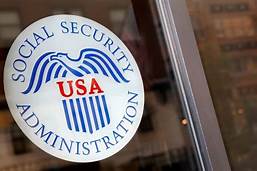From SCOTUSblog:
Wednesday’s argument in Babcock v Kijakazi displayed a bench still uncertain about how to resolve a problem about the Social Security benefits available to a small group of National Guard workers.
The case involves a special rule that protects certain members of the “uniformed services” from a rule that limits Social Security benefits for people with irregular work histories over the course of their lifetime. … The case involves a group of about 50,000 people still living who worked before 1984 as a “dual-status military technician.” Although paid as civilians, those technicians provide a variety of services involving the National Guard and are obligated to maintain membership with an appropriate rank in the National Guard and to wear the corresponding uniform while on duty. At bottom, the question is whether the pay they receive for that work is “wholly” based on service “as” a member of a uniformed service, even though much of it is civilian rather than military work.
None of the justices seemed to approach the case with certainty. Two main threads of analysis dominated the argument. For Chief Justice John Roberts, it seemed obvious that some of the pay was for the serviceman’s work “as” a member of the National Guard, but much of it was for the various civilian duties of his technician status. …
Justice Elena Kagan – the only justice who seemed to state a settled view during the argument – seconded Roberts’ perspective, commenting “that we can sort of make this simpler” by following his lead, “and this is the way I read the language too.”
Conversely, Justice Neil Gorsuch found most relevant the statutory requirement that dual technicians must be members of the National Guard. In a colloquy with Nicole Reaves (appearing on behalf of the government), Gorsuch commented that “the work may be civilian for a bunch of other purposes, but it can only be performed by someone who is serving in the capacity of a National Guardsman.” …







